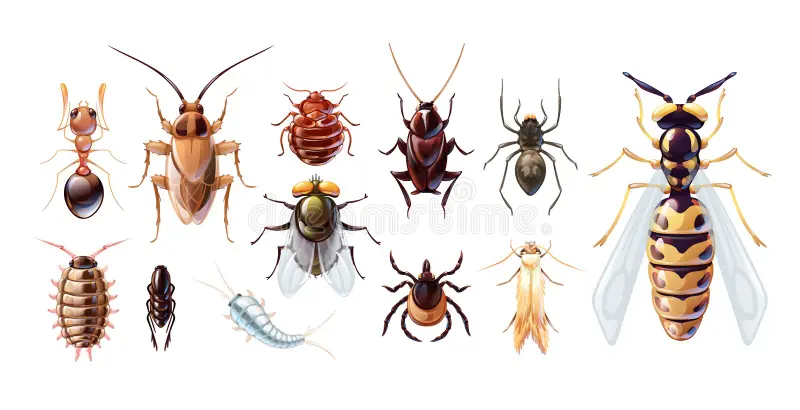Care homes provide a safe and nurturing environment for vulnerable individuals, but they can also inadvertently attract unwanted visitors—pests. Pest infestations not only compromise the health and safety of residents but can also tarnish the reputation of a care home.
Effective care home pest control is essential for maintaining a clean and healthy environment. In this article, we’ll explore the most common pests found in care homes and how to handle them effectively, ensuring the safety and comfort of both residents and staff.
1. Bed Bugs: Tiny Nighttime Menaces
Bed bugs are one of the most notorious pests in care homes, thriving in shared living spaces where there is frequent turnover of residents and visitors. These small, flat insects hide in mattresses, furniture, and cracks during the day and come out at night to feed on human blood, causing itchy bites and discomfort. While they don’t transmit diseases, their presence can lead to significant psychological stress for residents.
To combat bed bugs, regular inspections are crucial. Encourage staff to look for signs like small brown stains on bedding or the insects themselves. Professional pest control services for care homes are highly effective in eradicating bed bugs using heat treatments or targeted insecticides. Care homes should also invest in mattress covers and train staff on early detection to prevent infestations from spreading.
2. Cockroaches: Resilient and Unhygienic Intruders
Cockroaches are a major concern in care homes due to their ability to spread pathogens like salmonella and E. coli. These pests thrive in warm, damp areas such as kitchens, bathrooms, and storage rooms, where they can access food and water. The sight of even one cockroach can indicate a larger infestation hidden behind walls or under appliances.
Preventing cockroach infestations starts with maintaining excellent sanitation practices. Seal cracks and crevices, eliminate food debris, and ensure that waste is disposed of promptly. In case of an infestation, a professional pest control company can deploy bait stations, traps, or residual insecticides to eliminate the problem effectively. Staff training on preventive measures is also key to keeping cockroaches at bay.
3. Rodents: Dangerous Disease Carriers
Rodents like rats and mice pose a serious threat to care homes. Not only do they gnaw through walls, furniture, and wiring, but they also spread diseases such as hantavirus and leptospirosis through their droppings and urine. Their presence can also create anxiety among residents and staff, further disrupting daily operations.
Care homes can deter rodents by securing all potential entry points, such as holes in walls, gaps around windows, and utility openings. Keeping food storage areas clean and using sealed containers can minimize attractants. If rodents are detected, a pest control company should be contacted immediately to set traps, use rodenticides, or implement humane removal methods. Ongoing monitoring is essential to prevent re-infestation.
4. Ants: Persistent Invaders
While ants may seem less threatening than other pests, their ability to contaminate food and spread quickly makes them a significant issue in care homes. Common ants, such as sugar ants or carpenter ants, are drawn to food crumbs, sugary spills, and damp environments. Once they establish a colony indoors, controlling them becomes increasingly challenging.
The best way to prevent ants is to maintain strict cleanliness, especially in kitchens and dining areas. Seal any cracks in walls or flooring to block their entry points. If a colony is discovered, a commercial pest control company can use specialized bait and treatments to eliminate the infestation. Continuous vigilance and proactive measures are key to keeping ants under control.
5. Flies: Annoying and Potentially Hazardous
Flies are more than just a nuisance; they are vectors for bacteria, spreading pathogens as they move from waste to food. Care homes with open trash bins, uncovered food, or unclean drains are particularly susceptible to fly infestations. The presence of flies can compromise hygiene standards and put residents at risk of illnesses like food poisoning.
To manage flies, care homes should use tight-fitting lids on trash bins and maintain clean surroundings. Window and door screens can help keep flies out, while UV light traps and insecticides can address existing infestations. A trusted care home pest control service can provide tailored solutions to ensure flies are effectively eradicated and prevented from returning.
6. Stored Product Pests: Hidden Threats in Food Supplies
Stored product pests, such as weevils, grain beetles, and pantry moths, can infiltrate care home kitchens and pantries. These pests contaminate dry goods like flour, rice, and cereal, rendering them unusable and posing health risks to residents. Early detection can be difficult, as these pests often go unnoticed until an infestation is widespread.
To prevent stored product pests, care homes should implement strict food storage practices, such as using airtight containers and rotating stock to ensure older items are used first. Regularly inspecting pantry items for signs of infestation can also help. If pests are found, a pest control service for care homes can conduct thorough inspections and apply treatments to safeguard food supplies.
Ensure a Safe, Pest-Free Environment for Care Home Residents
A proactive approach to pest management is vital for care homes. By understanding the risks posed by common pests and taking preventive measures, care homes can protect their residents’ health and well-being. When infestations occur, engaging a professional care home pest control provider ensures the issue is addressed quickly and effectively, minimizing disruptions and long-term risks.
You may also read: Importance of First Response EMS Training
If you’re facing pest challenges in your care home, don’t wait for the problem to escalate. Act now and partner with a trusted commercial pest control service to create a cleaner, safer environment for your residents and staff. Investing in pest control today can make all the difference in maintaining your care home’s reputation and peace of mind.

